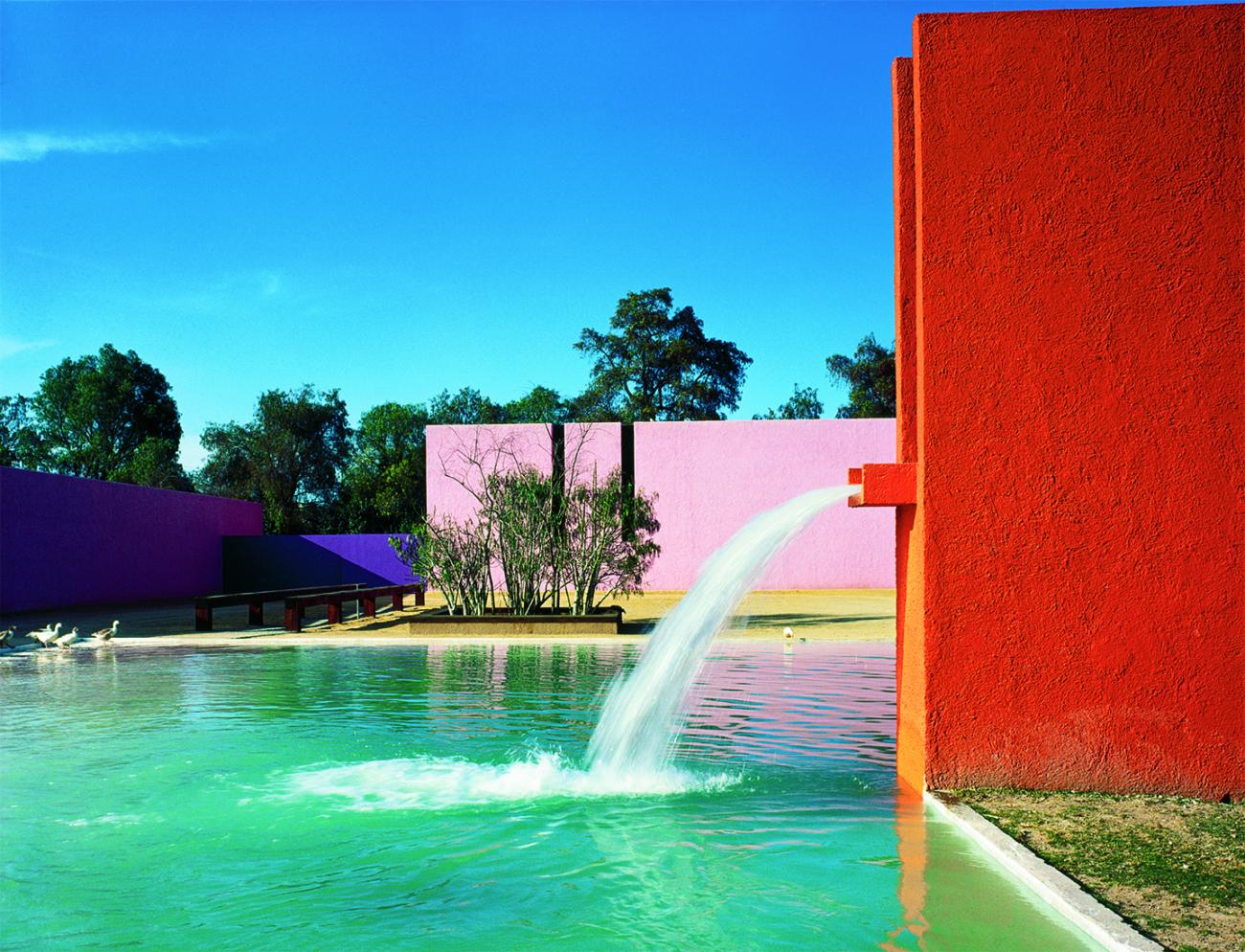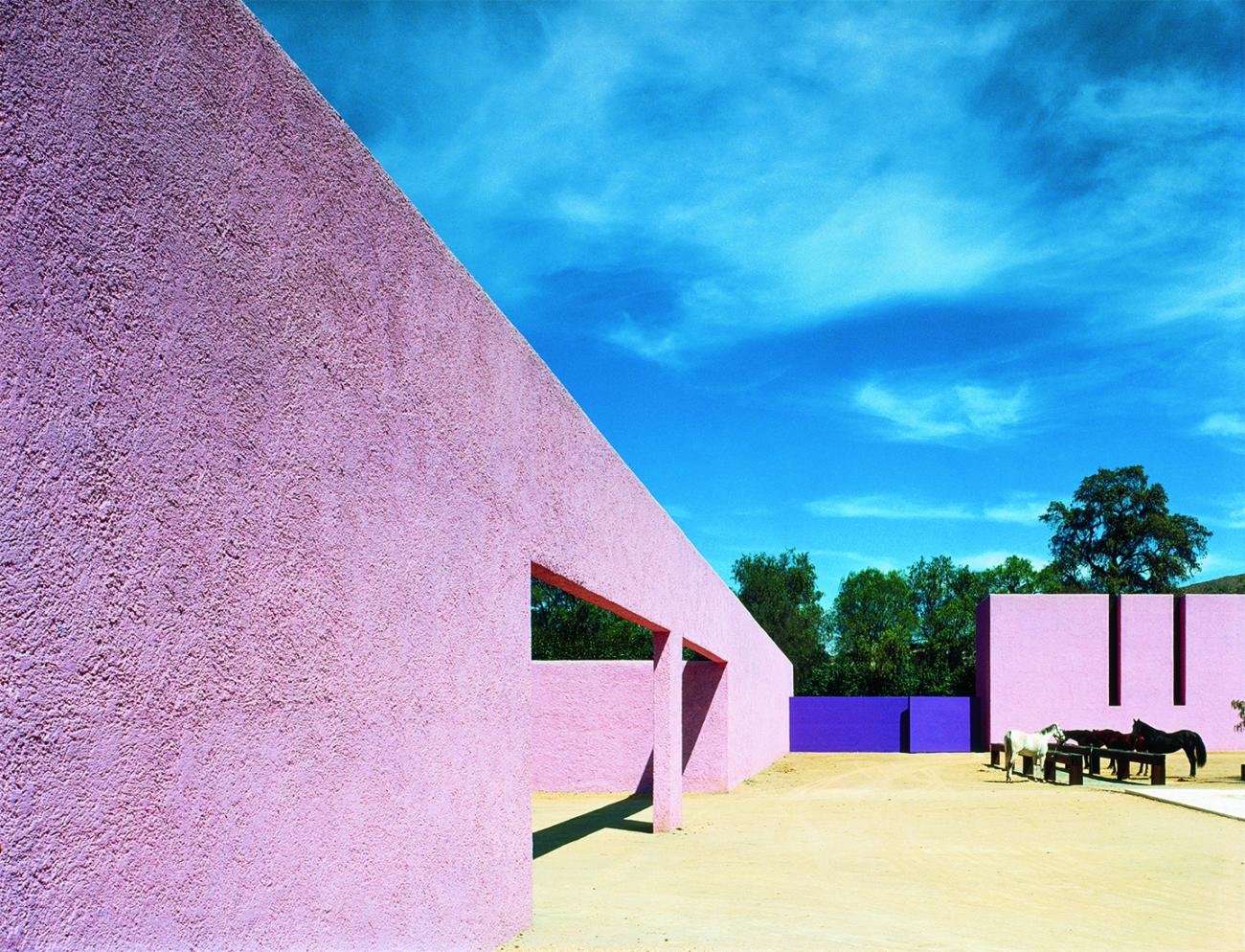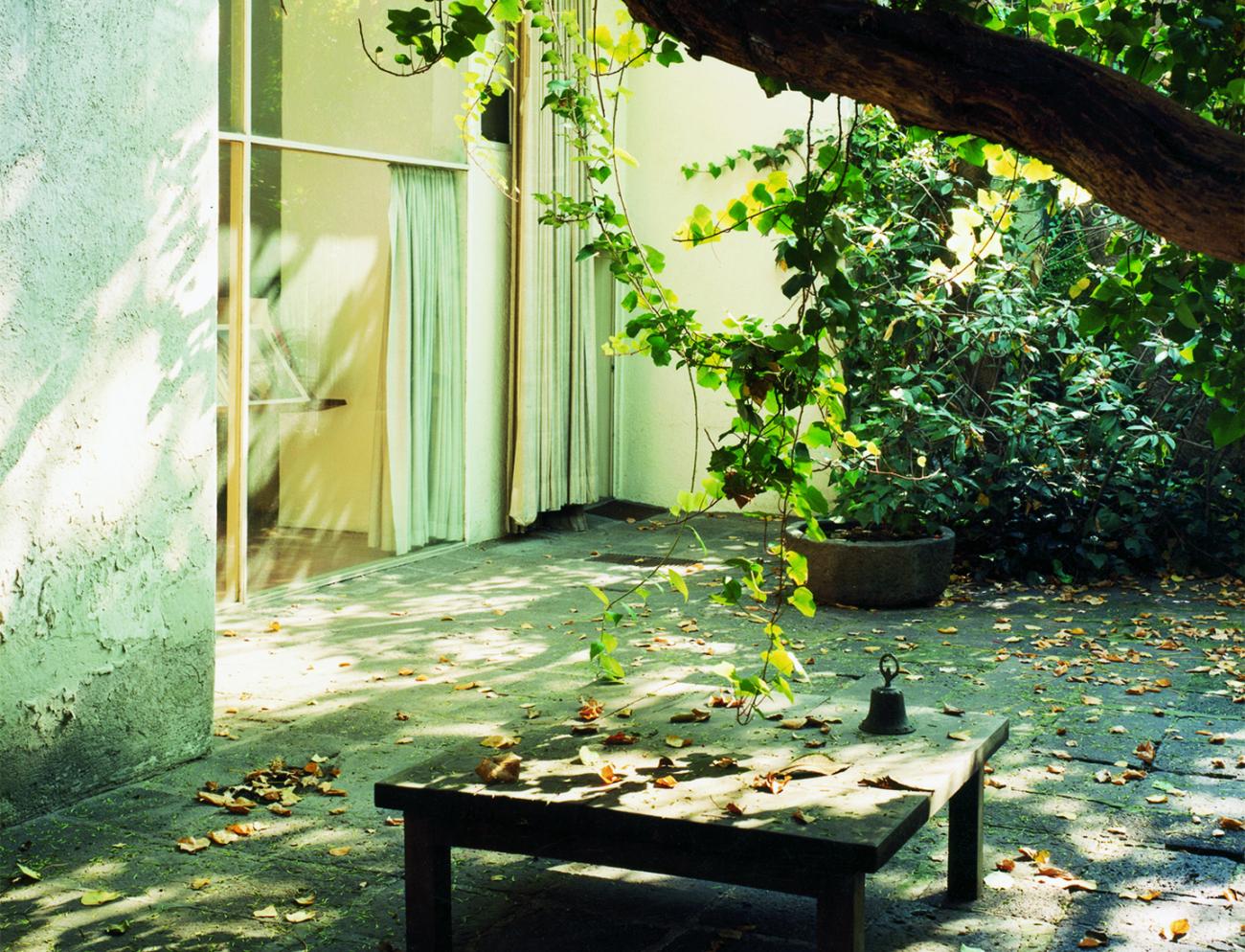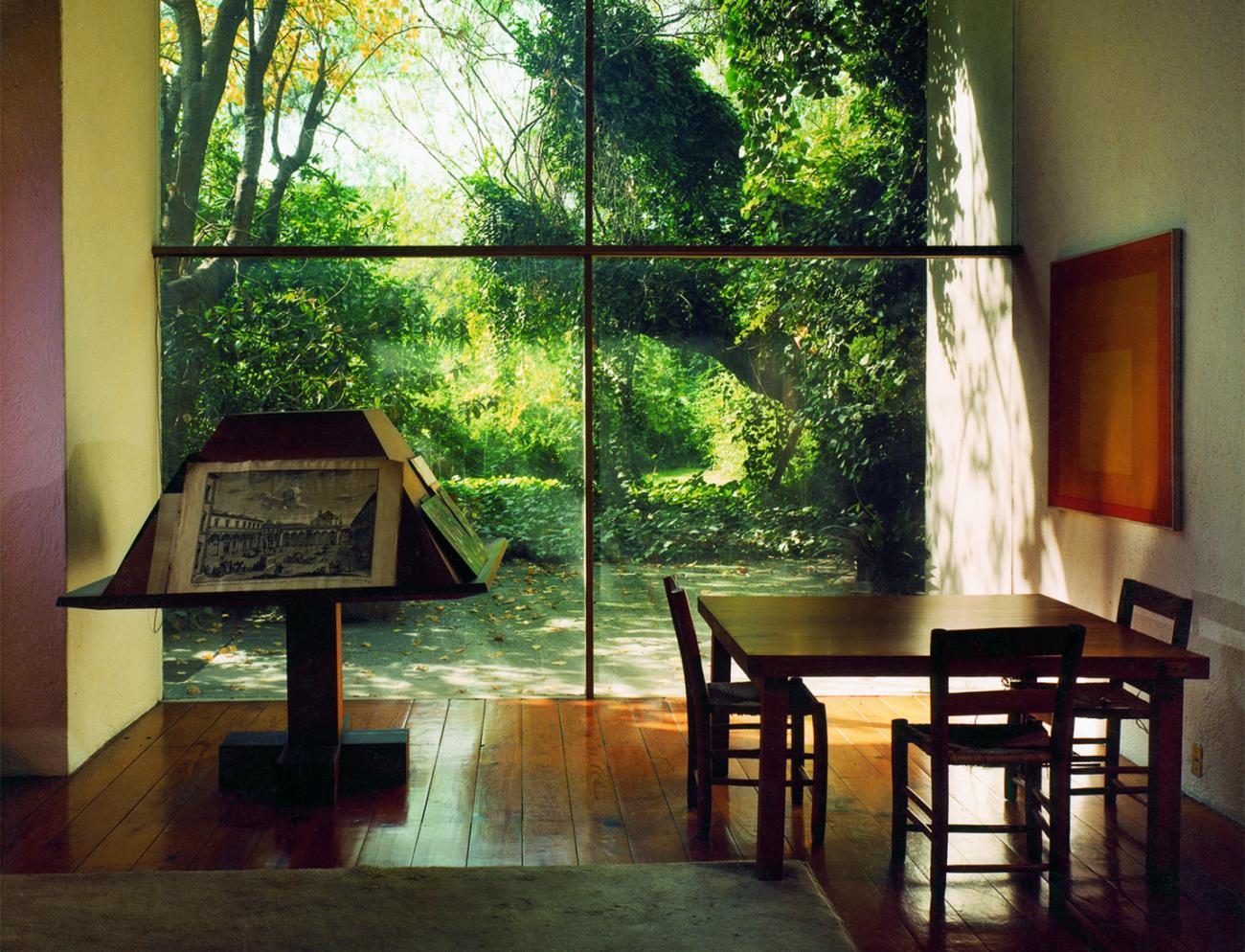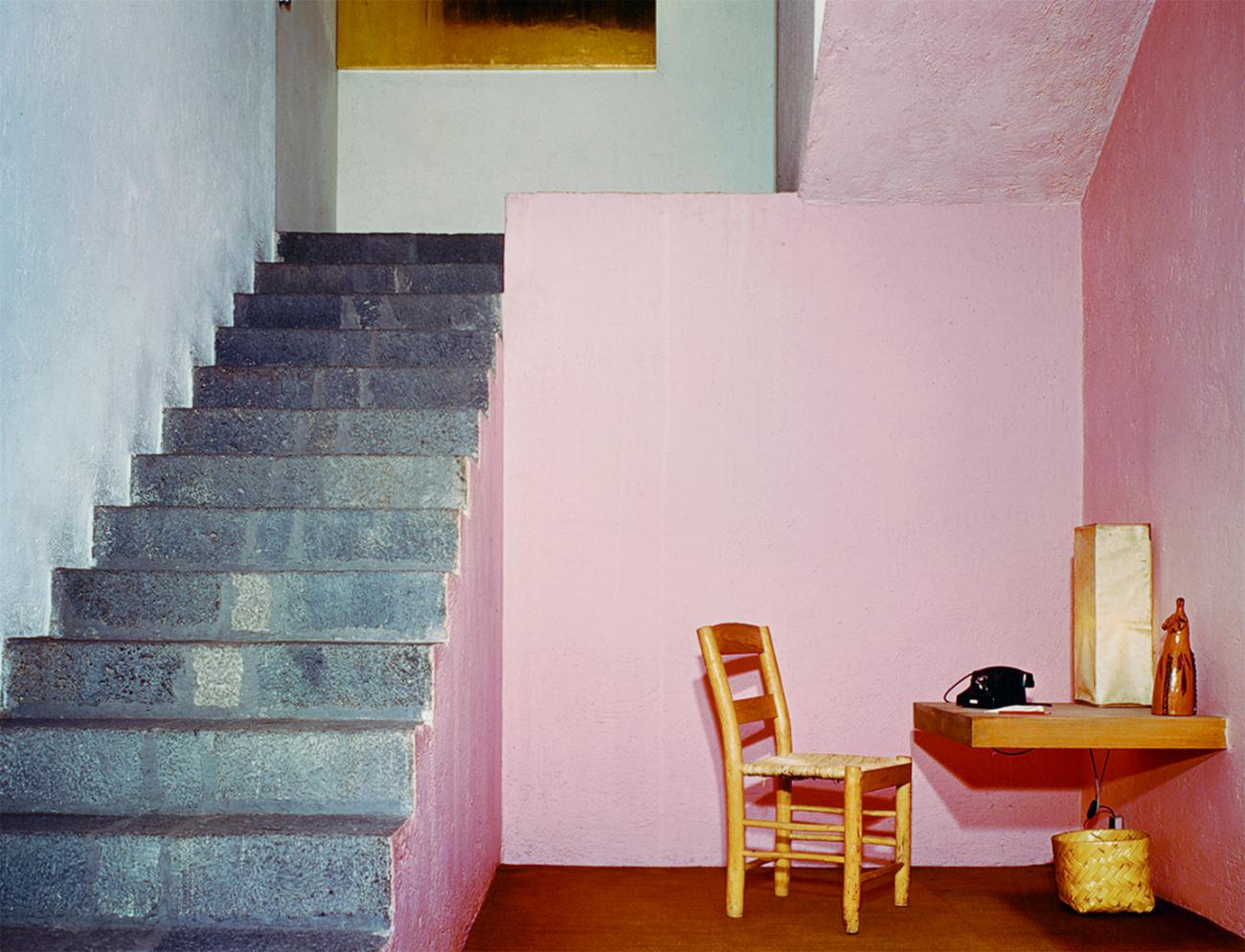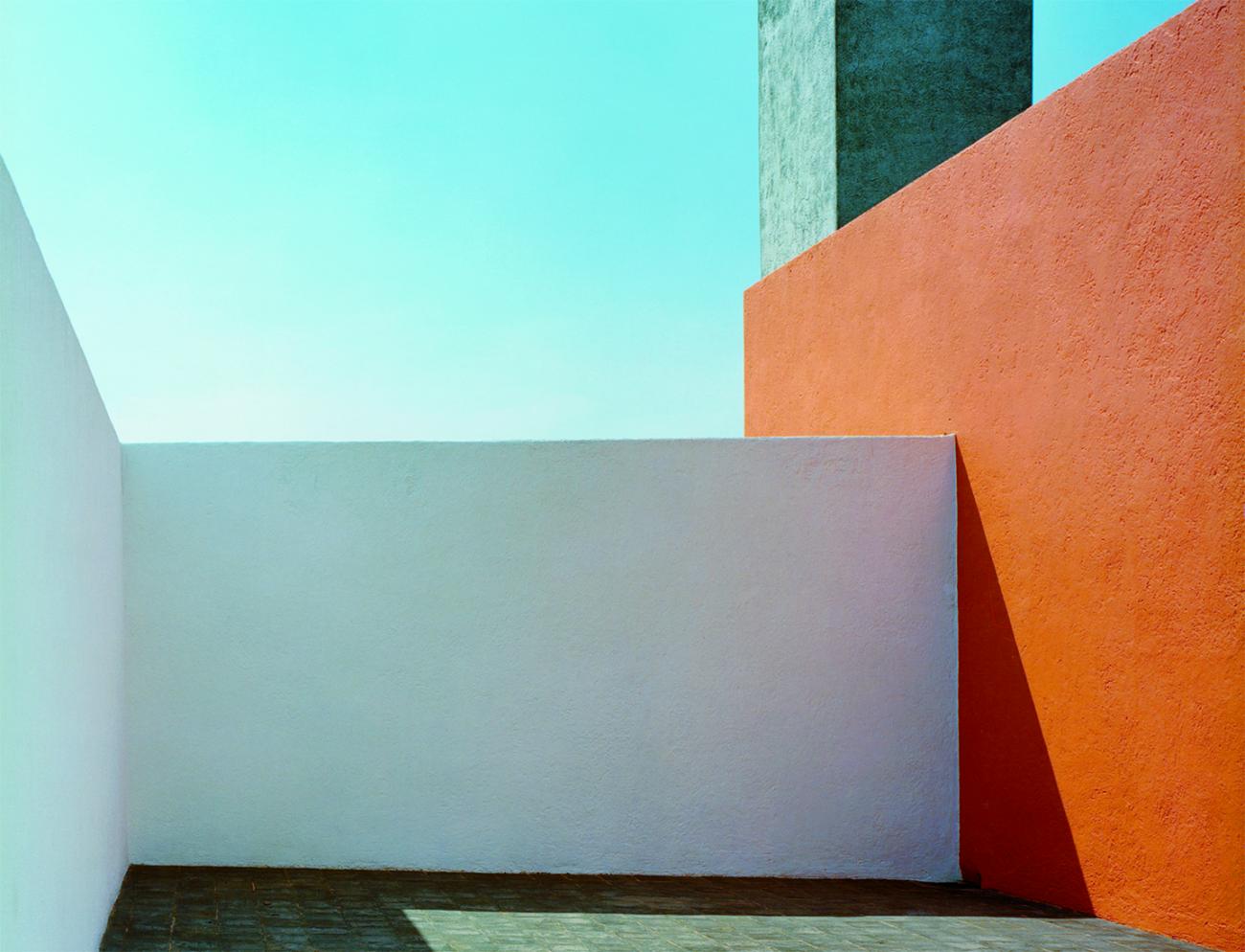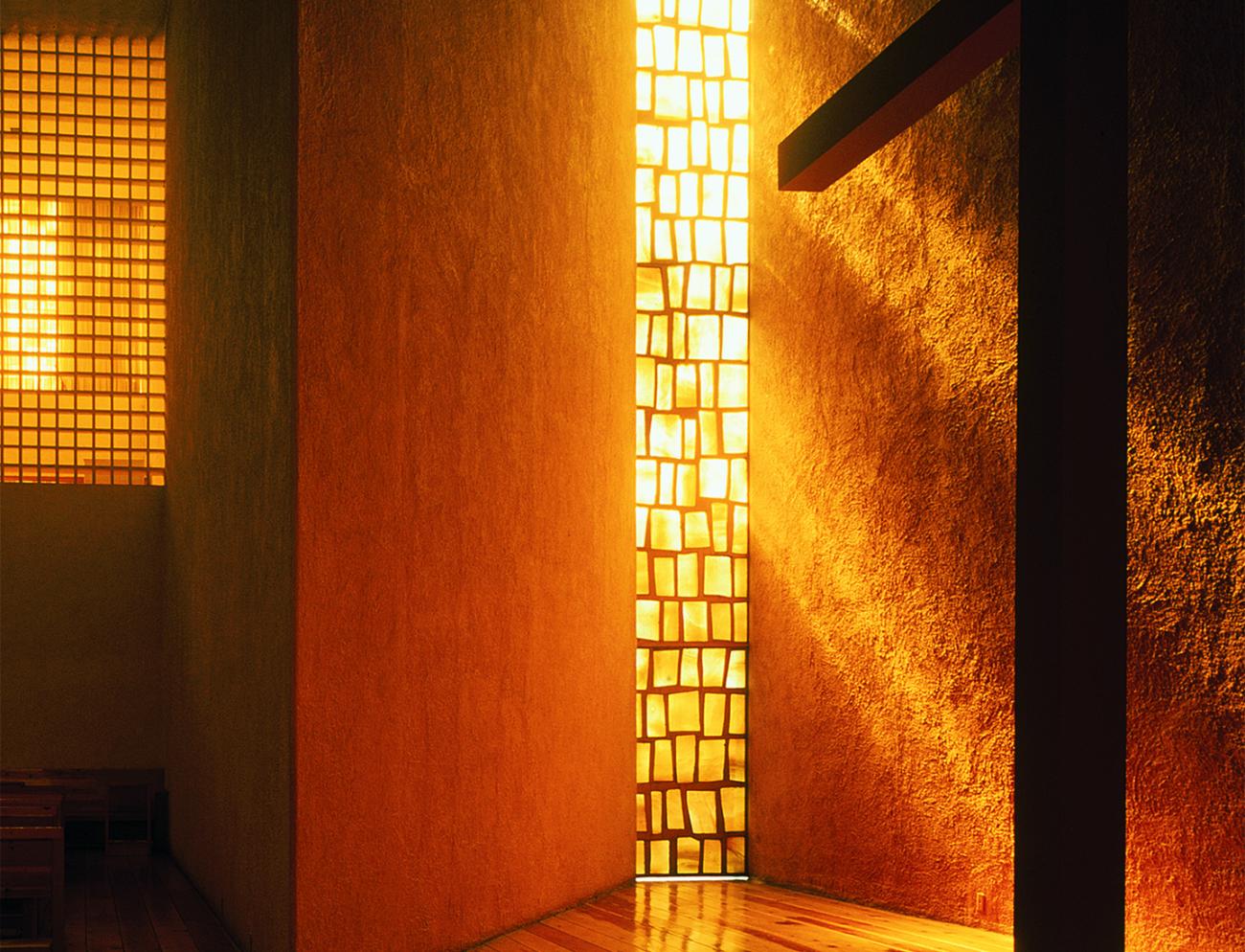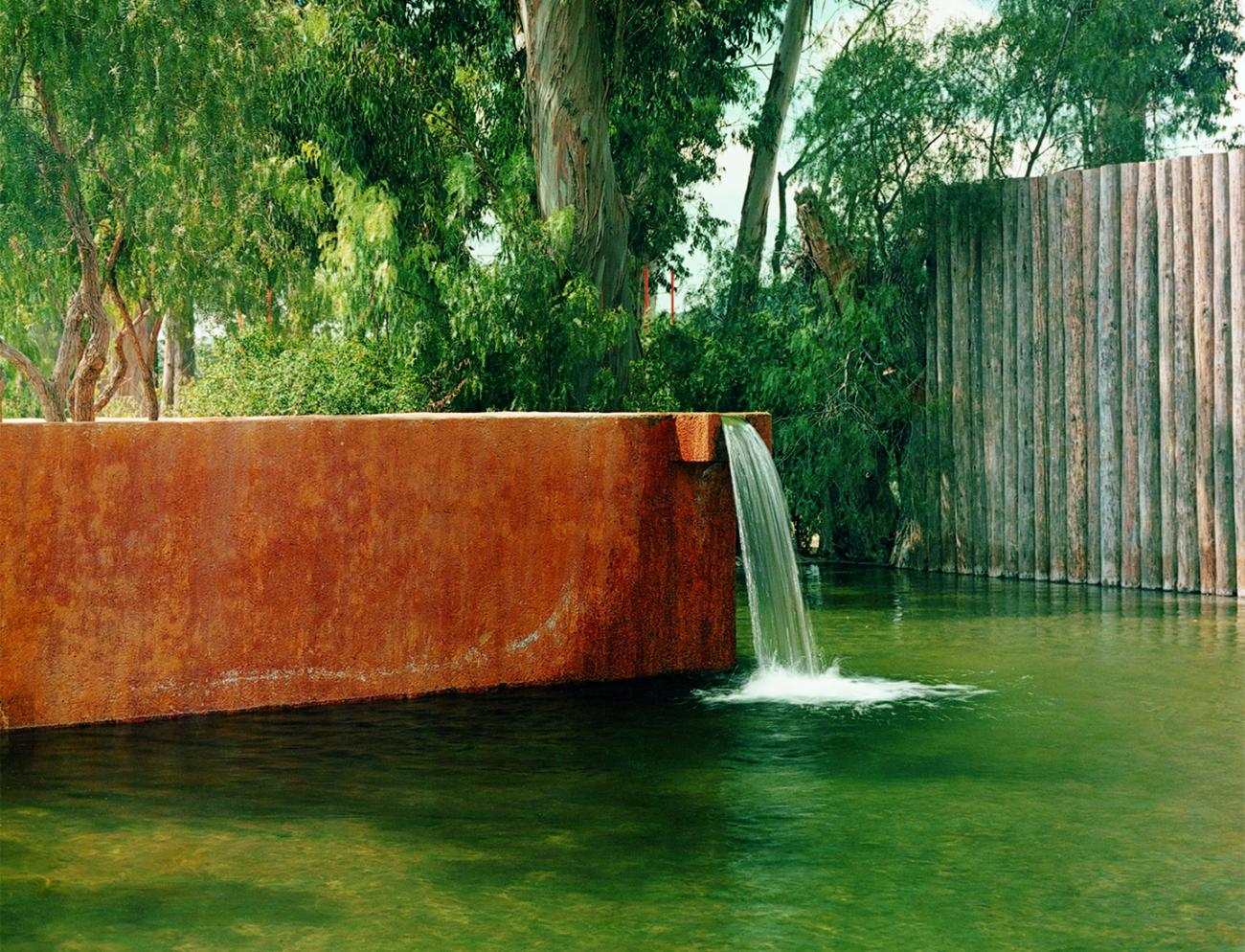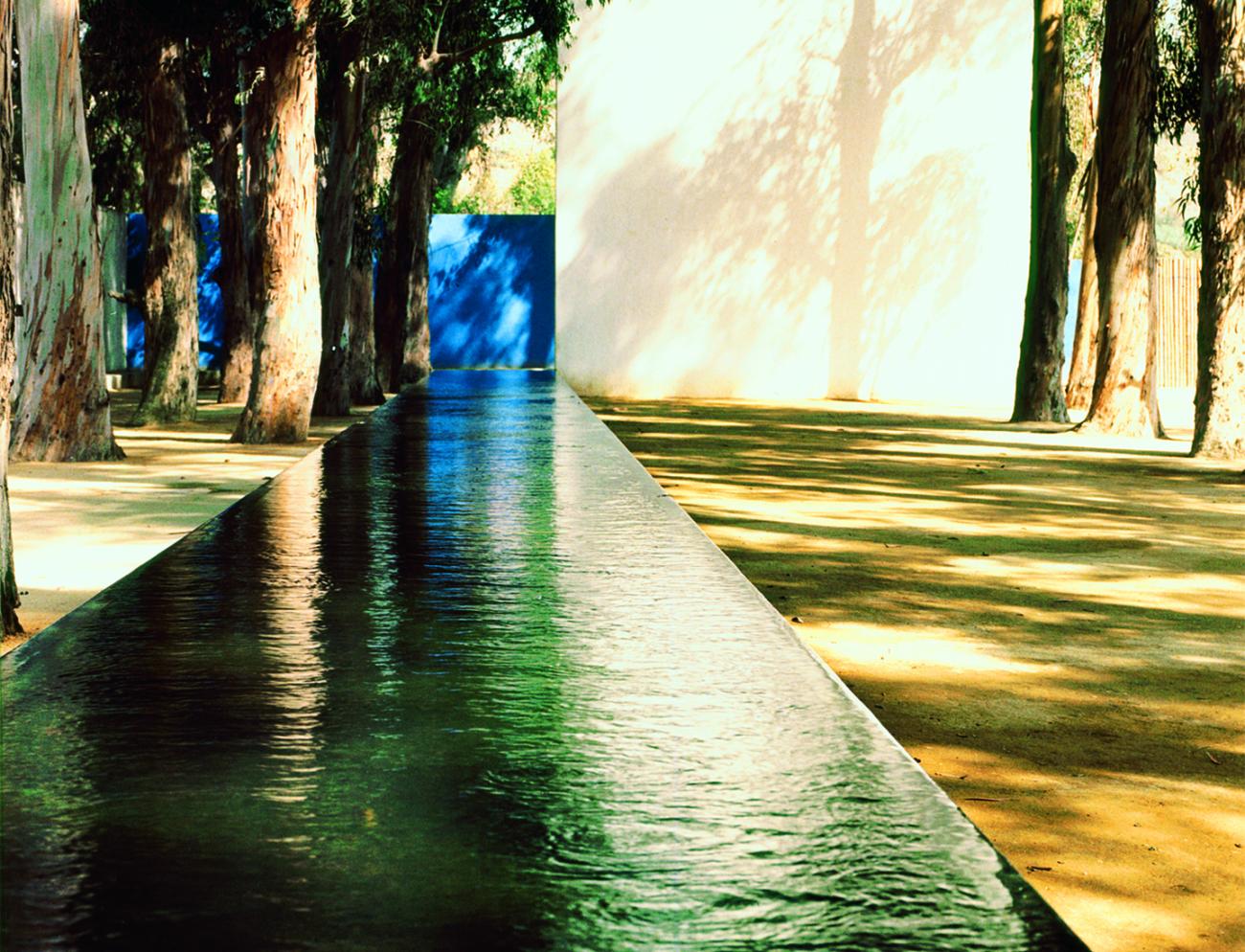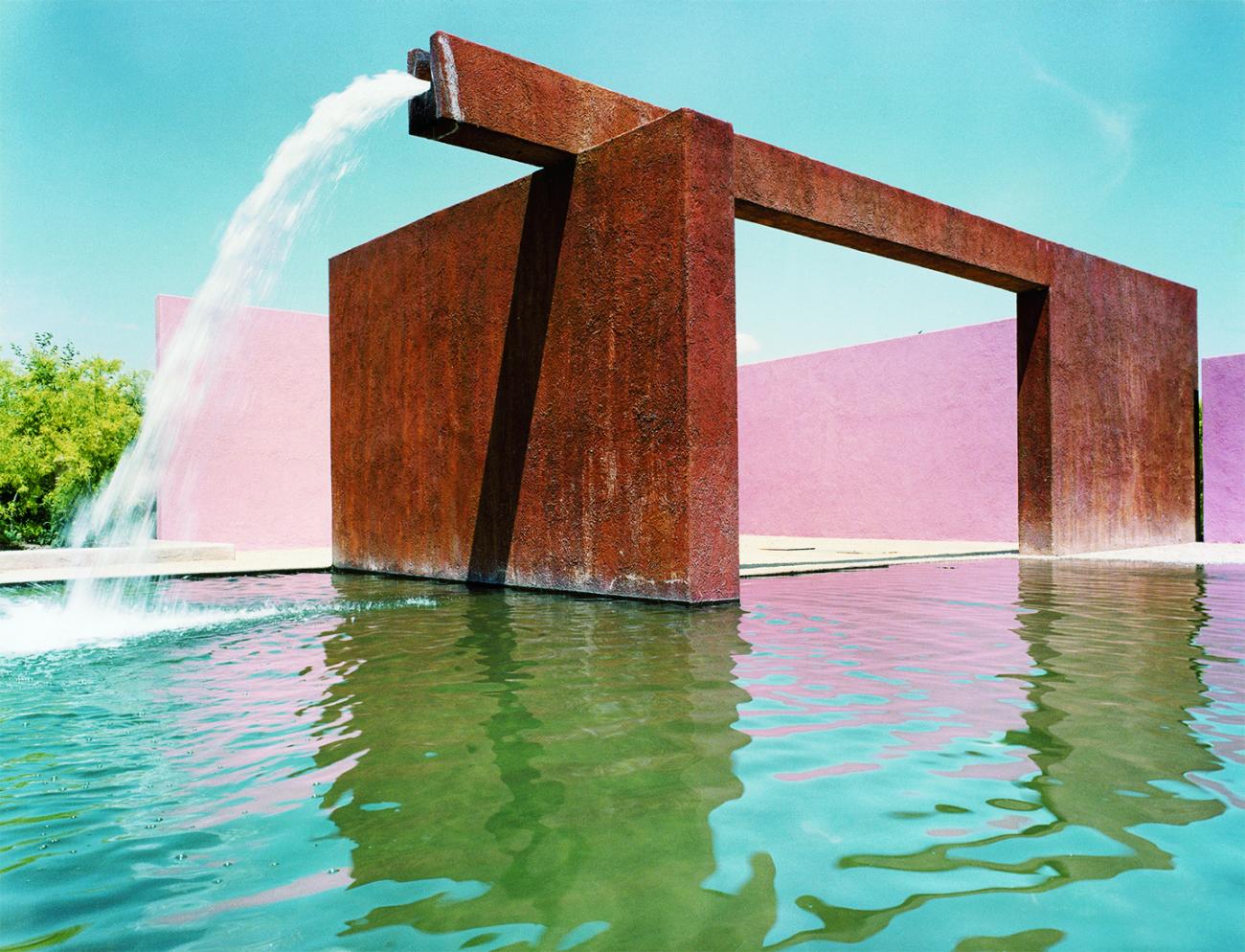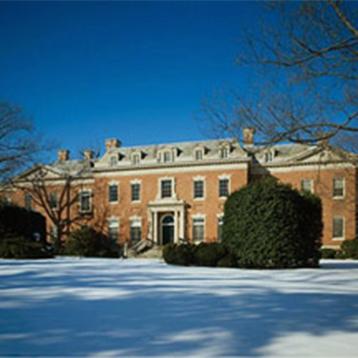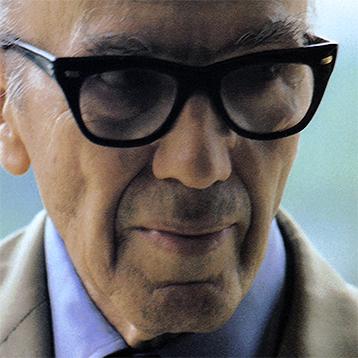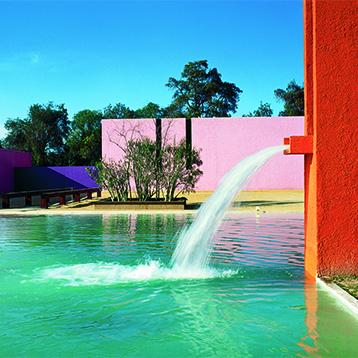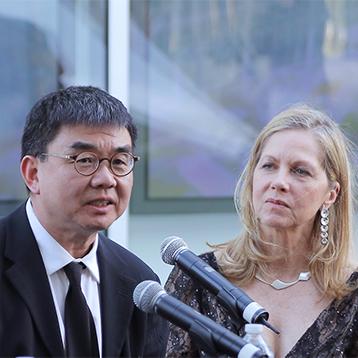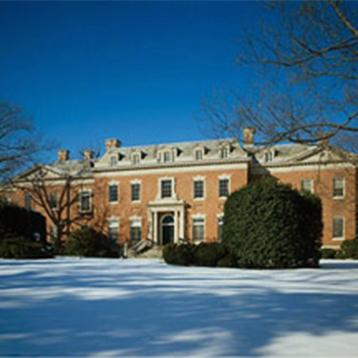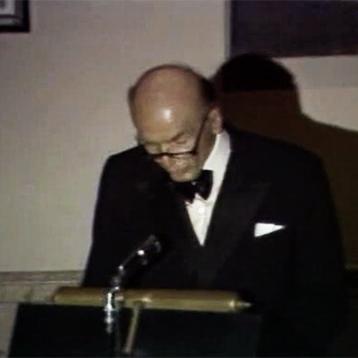Luis Barragán (1902-1988) was born in Guadalajara, Mexico. His professional training was in engineering, resulting in a degree at the age of twenty-three. His architectural skills were self-taught. In the 1920s, he traveled extensively in France and Spain and, in 1931, lived in Paris for a time, attending Le Corbusier's lectures. His time in Europe, and subsequently in Morroco, stimulated an interest in the native architecture of North Africa and the Mediterranean, which he related to construction in his own country.
In the late 1920s, he was associated with a movement known as the Escuela Tapatía or Guadalajara School, which espoused a theory of architecture dedicated to the vigorous adherence to regional traditions. His architectural practice was based in Guadalajara from 1927 until 1936 when he moved to Mexico City and remained until his death. His work has been called minimalist, but it is nonetheless sumptuous in color and texture. Pure planes, be they walls of stucco, adobe, timber, or even water, are his compositional elements, all interacting with Nature.
Barragán called himself a landscape architect, writing in the book, Contemporary Architects, (Muriel Emanuel (ed.) published by St. Martins Press, 1980), "I believe that architects should design gardens to be used, as much as the houses they build, to develop a sense of beauty and the taste and inclination toward the fine arts and other spiritual values." And further, "Any work of architecture which does not express serenity is a mistake."
